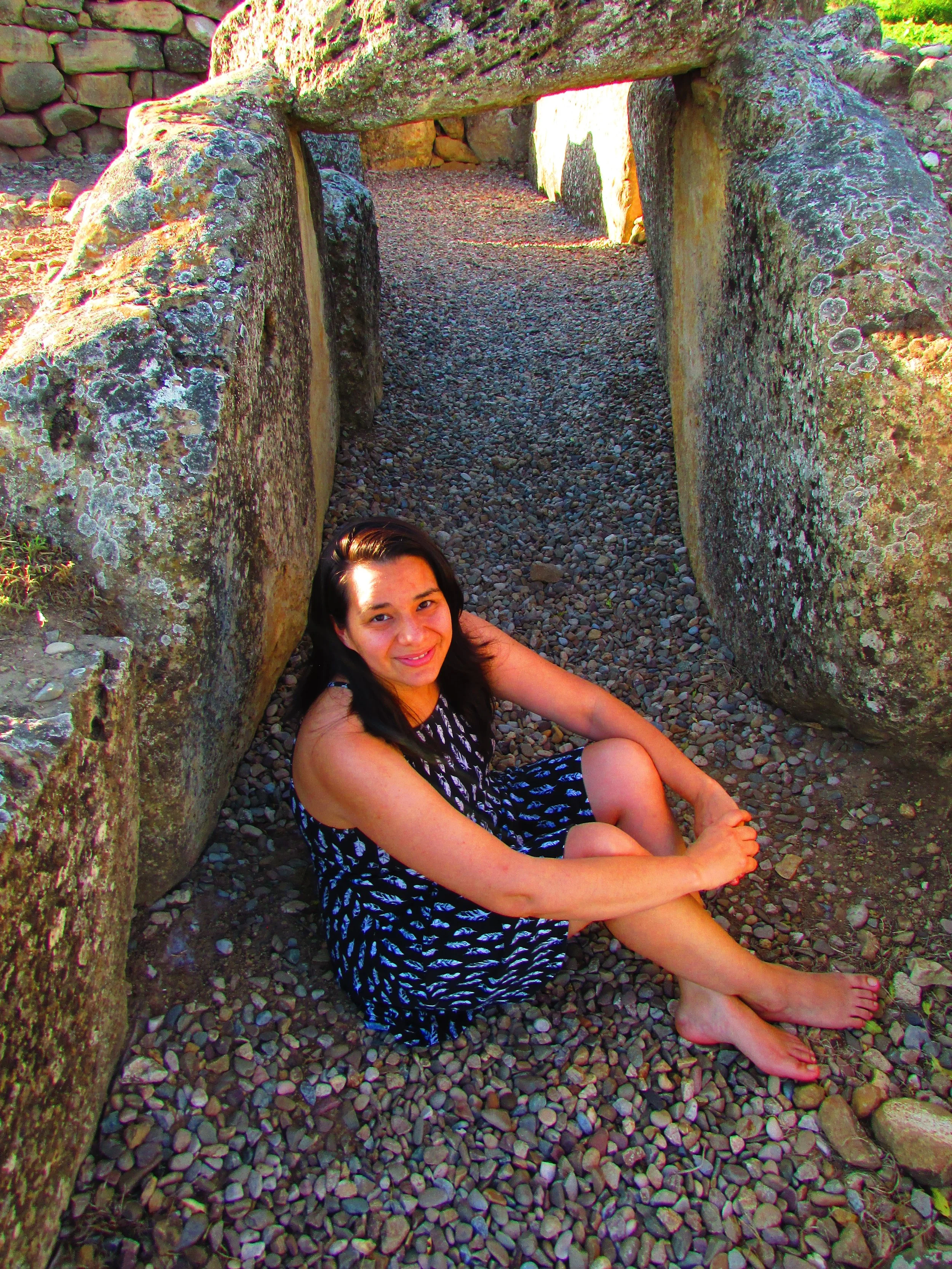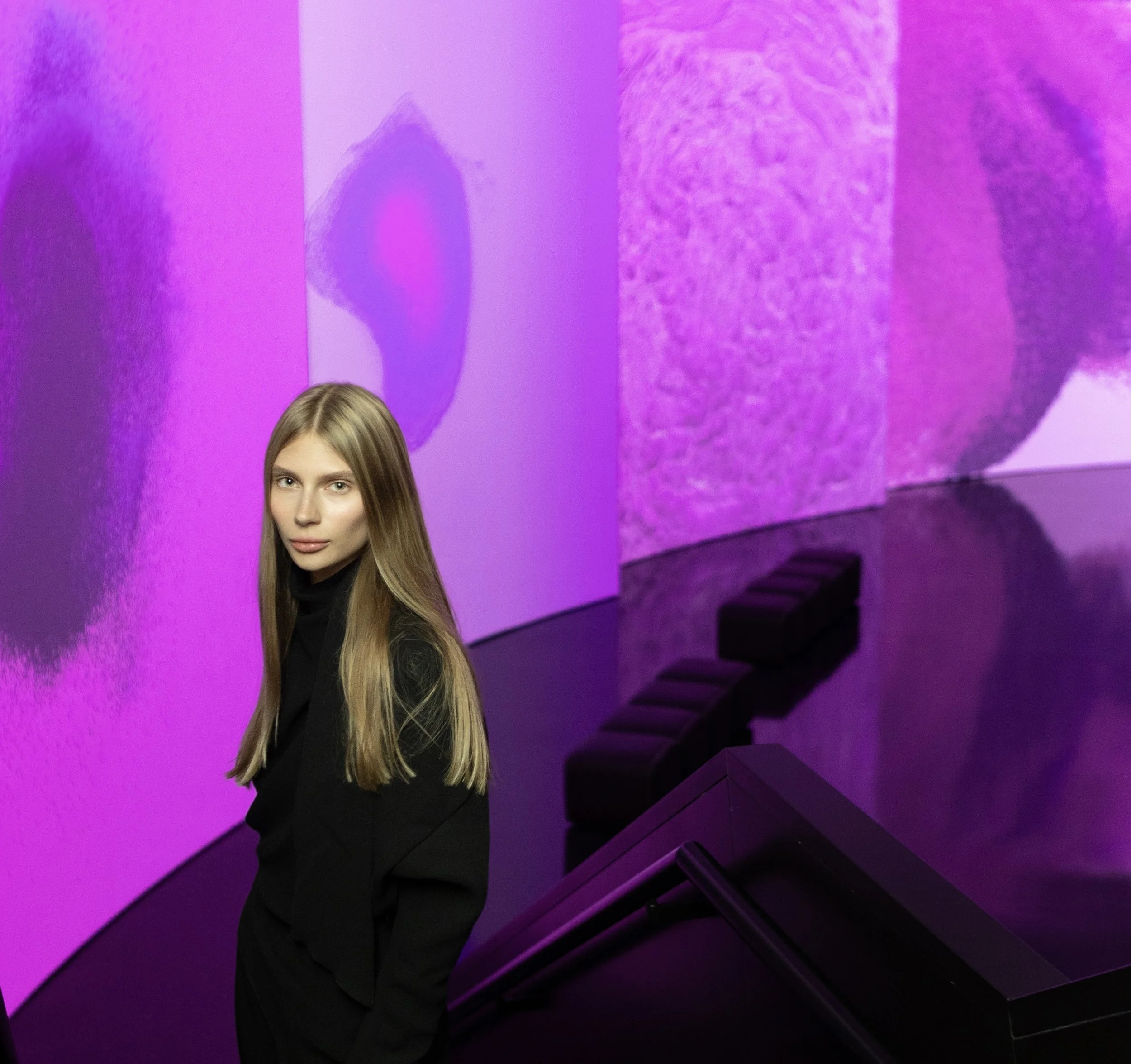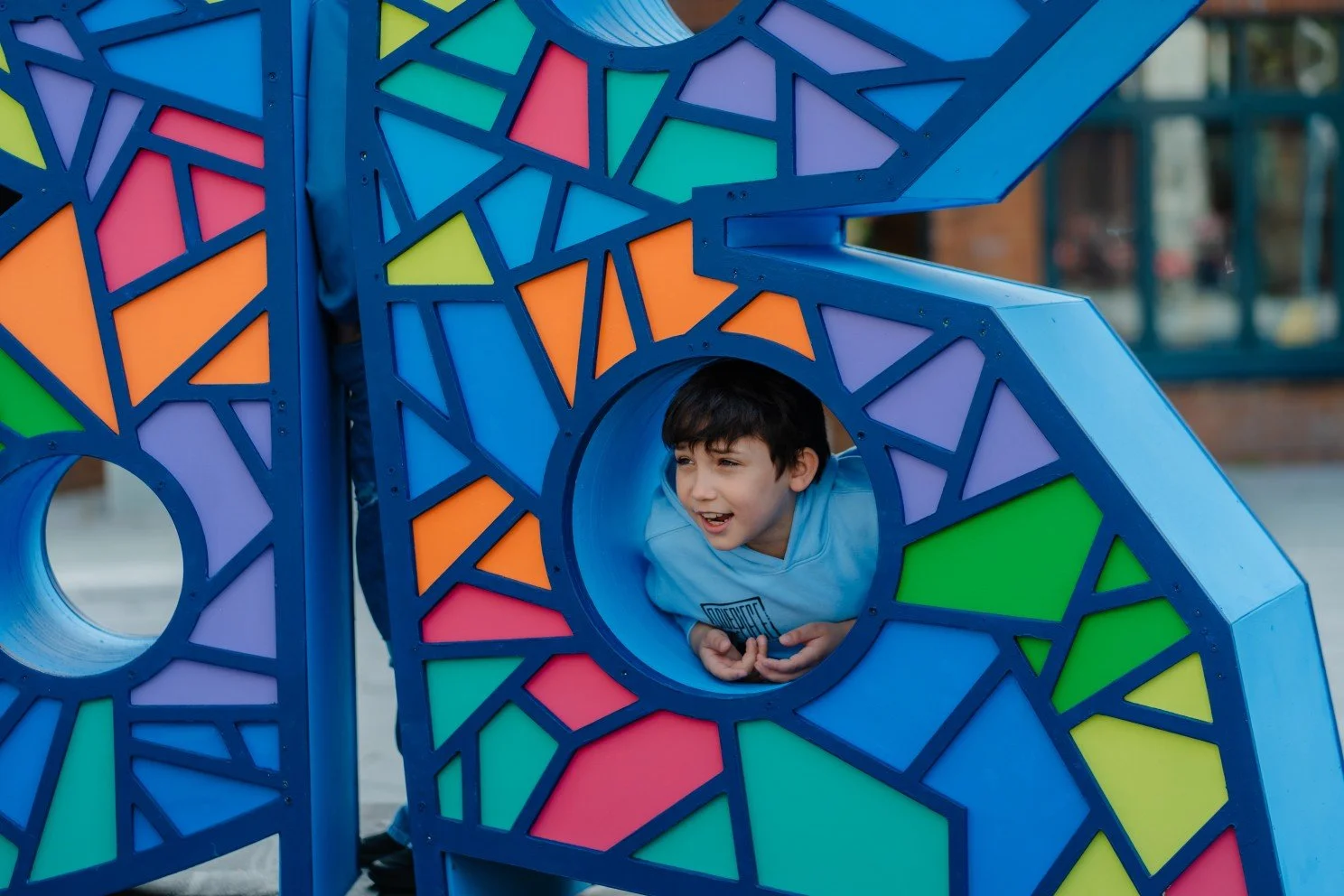10 Questions with Elida Diez
Eli Diez, born in Panama and based in the Basque Country, since she was a child, has been seduced by the world of aromas; surrounded by lush landscapes and intoxicating fragrances, she shares those pictorial memories with the world through her art: Perfume. She has explored and experimented with a wide range of aromatic compounds, giving free rein to her imagination to give life to essences that inhabit the artistic level.
She has even exhibited in the Olfactory Art Keller Gallery in Manhattan, New York.
Her Aromatic Perfuming Art studies started at the School of Lost Arts, founded by Fine artist and botanical perfumer Roxana Villa in 2018, and she is currently at the School of Creative Perfumery of Award-winning perfumer and astrobiologist Marina Barcenilla.
She is currently working with two groups of artists, one local in Rioja Alavesa with topics around eco-rural and gender equality terms, and the other with a project named “NOMAD” with the conceptual perfumer Nina Lamaison.
In her creations, she mixes her ethnobotanical, phytotherapeutic, and culinary knowledge with a sensitivity that manages to transform the tangible into the ethereal, transporting us to the deepest universes.
She founded Gaua Project to share this biodiverse universe with others; Gaua means ‘the night’ in the ancient language Euskera, which represents the subtle beauty and poetic inspiration as a representation of her best time of the day for composing.
Elida Diez - Portrait
ARTIST STATEMENT
What emerges from the approach to her scents and related visuals is the investigation and interest in self-knowledge as part of raw nature, which encourages her to compose. Rough Nature is the big dimension that governs her need for the creation of the molecular world that surrounds the Gaua Project.
Ethnobotany and Hermetic Philosophy are her main objects of study. She uses the mixture of essences and perfume as a conceptual expression, using nature and plant aromas as the basis that connects her work with social concepts and the taboo of human smells. Complementary contradiction, contrast, and the dichotomy of exaggeration/lack of a molecule are the main factors that characterize her expression with the aromatic world, making her own botanical extracts to incorporate them.
She is moved and eager to feel when the connection between humans and nature is intense, with an automatic impact; these impacts are interesting with smell because of its unique cerebral/sensory connection with memory and emotions, which is why it is her medium.
Putrefactio brevis, photography, olfactory art, 2023 © Elida Diez
Putre-factio: an extraction of withered flowers previously extracted from ancient perfume techniques (enfleurage). Medium: Odour molecules + Flowers extractions. Current exhibition at Minimal Scents Exhibition at Olfactory Art Keller Gallery, New York.
INTERVIEW
First of all, tell us something about you. Who is Elida Diez in three words?
Expressive, lively, and passionate.
What experiences and encounters shaped you into the person you are today?
Mainly, it has been having lived in a family environment with violence and happiness ups and downs. This made me seek, in my most anxious moments, a quick escape, filling my curiosity through the study of Natural Sciences, even traveling with my studies from a very young age, which opened up my sensoriality and usually brought me such beautiful moments. Anxiety opened the need for expression to share the curiosities I found and to reach out to other curious people.
Gaueko, porcelain for olfactory art, 5 cm, 2020 © Elida Diez
Gaueko: a perfume oil and porcelain of the olfactory investigation of nights, final dissertation of School of Lost Arts, USA. Mediums: Porcelain + plant extractions in oil. Porcelain designed by Eli Diez and made by La Plazuela de Barriocepo. Perfume and Picture made by Eli Diez.
You are the founder of the Gaua Project. Tell us more about this project and what you want to achieve with it.
Gaua is a project where I explore different fields, all around scent and ethnobotany. The use of aromatic plants by humans seems to be invisible, like scent, and my aim is to explore it as much as I can. I research their local uses in different cultures, I study them in both creative/intuitive and scientific ways, and I practice these extraction techniques. With these extracts, I create bespoke historical perfumes, olfactory experiences, culturally inspired ethnographic perfumes, and olfactory art pieces. I love to collaborate with other artists and farmers. I also love to create the physical or digital visuals/supports that accompany the imagery of everything I make. I would love to take the culture of smell far away so that people could appreciate what the sun, the rain, and the soil sculpt, those wild aromas that compose and surround us, keeping alive the relationship between human beings and our wild nature. I will continue to help the artisans around me and never stop communicating through scent and sharing what so many people who work the land have to offer through their extracts and plants; that is my goal.
You primarily work with perfumes; how did you get interested in this art?
Perfumery naturally interested me while studying aromatherapy in 2016. Perfumery is considered between craft, science, and art because it involves the person who makes it and his or her subjectivity and artifice, an in-depth study of molecules and interactions, and also a quality sometimes assumed to be innate, which is often a capacity for constancy and learning by hand and through tradition. I was struck by the fact that it was a mysterious art with a lot of long ways to explore. The methods of extracting aromas and their history are the things that fascinate me, that hidden origin that goes from the religious to the medicinal, and the difficulty of fixing the volatile.
Putrefactio, olfactory art, 50 ml, 2023 © Art by Elida Diez - Photo courtesy Olfactory Art Keller Gallery
Ars longa, photography, olfactory art, 2023 © Elida Diez
How do you create a fragrance? Can you walk us through the whole process, from the first idea to the final product?
In this art, there is no defined first step. In my case, with three examples, it can start from a concrete idea that comes from the mind and with a brief to develop the idea and the aroma, or it can come from the aroma itself, smelling it and with technique or intuitively composing it. The most unique is just sitting in front of the perfumery organ, adding and taking notes, letting my body, memory, and nose work alone. As the first form that I describe, I made it with Gaueko, my first perfume, in which I recreate the aroma of the night and add my vision of the nocturnal idyll and the moon poetics: after smelling the atmosphere for a year at night, calmly, from different places (inside a dolmen, in natural parks, in the vineyards, etc.). I created the body with three scents, which I knew had to be there because they had a nocturnal aspect and because they were historical in perfumery: neroli, cedar, and incense. After choosing a body, calculating the quantity to be added, and knowing the strength of each scent, I smelled in mouillette (smelling strip) other scents together with those three with blind testing to determine which ones perfectly described my sensations and which ones were the best blended without using my mind, just my nose. I do a lot of nose work; although I learned to organize everything on paper to begin with, now I work more with the scents in my head register.
For example, for the Akelarre perfume, which is inspired by the famous festivities with the symbolic ideology of the curanderas (witches) of yesteryear, I wrote the whole formula beforehand and created it in three parts: first, I mixed the base, middle and top notes separately, i.e., the concentrated aromatic extracts; then I smelled and tasted them, mixing them little by little to study their proportion and finally, I macerated and cooked over a gentle heat the various spices and flowers which are the oily base, and then to finish by mixing them once they had been tempered with the aromatic extracts and with the hot beeswax.
The last and more risky is when I have a lot of inspiration: I am just sitting, smelling, and starting to add, taking notes at the same time, and adjusting in the moment. The magic is interesting and usually is the best way I create; I made it with UR/WATER, the last Olfactory Experience. This way, I find new fantasy accords (a new scent that comes from a combination of different ones) like Coke fizzy drinks or lilac flowers scent, only with botanicals, which are not so easy to make because they have a lot of molecules and interact very easy and can be a disaster and lost a lot of money, sometimes could be, but I learn when "I am" to compose like this. Usually, in perfumery, all these accords are created with unique molecules. It is difficult also, but plant extractions are very intriguing in the way they behave; they are alive for me. This is why sometimes I say, "When you don't look for it, you find the best."
Sublimatio, process pitch trefoil extraction for olfactory art, 10 cm, 2023 © Elida Diez
Sublimatio: Currently working in this project about the scent of sublimation alchemical process (dead bodies and water cycle process). Medium - Bituminaria bituminosa (Arabian pea or pitch trefoil) in alcohol extraction. Picture by Eli Diez.
What do you wish to communicate with your perfumes? Do you have a specific concept you want to create?
With my perfumes, I would like people to find their own nature. Despite how strange it is sometimes to a natural scent coming from a wild or cultivated plant, I like it when there is an identification with our own identity and life history or strong shocking sensations, and instantly, we have something similar to a climax in our body. I don't necessarily want people to "like" it; that's too simplistic for me. It is more determinant for me when people tell me that they notice "the countryside," "my grandmother," "the festivities of my village," or "my city" in my aromas. Or going further, "this color, this musical note, and this body sensation," this is being in heaven for me; I want everyone to be in heaven as well.
It is curious how, for example, smelling Akelarre, which is a perfume deeply rooted in the Basque tradition, a person from Iran smells it and reminds her of her city. Or that someone tells me, "With this perfume, I feel myself in a tomb." It is a perfume that has the most expensive materials in the market and that I designed as something "floral and poetic," but creating it inspired me a moment being inside an ancient tomb. Or the face of someone smelling while cannot describe but feels true pleasure. Then I feel that the perfume is alive and is writing a new story. So, the concept is written by the person who smells them.
Smells and perfumes can evoke memories and images in a very powerful way, sometimes even more than images. What is one smell you particularly enjoy, and what does it remind you of?
Yes, they are very powerful. I enjoy the rose in all its forms and extracts; it brings back the memory of a mother and daughter or something very powerful and instinctive, like body nourishment and embrace. I also feel the powerful scent of tropical flowers with their voluptuousness and mature fruit, such as mango. Both remind me of Panama, my first home, where, in some areas, there is a temperate and tropical climate, and there are even flower festivals.
Ethnobotanical Kyphi, olfactory creation, 2,5 cm, 2021 © Elida Diez
Ethnobotanical Kyphi: 3 years of investigation, harvesting and handmade elaboration of this ancient mediterranean perfume but with local plants. Presented at Sandaili Tea Studio in Sensory performances, Basque Country. Picture by Eli Diez.
Uprooting (liberty), fleece glass, and odour molecules, 25cm, 2023 © Elida Diez
Uprooting (liberty): Participating idea for the Saatchi art for change prize 2023. Currently working in this work group project named Nomad with the perfumer Nina Lamaison. With 2 parts, one earth and other liberty, Uprooting emerges expressing the general anxieties and stress that afflict our reality, and becomes a silent witness to the injustices and social chaos that surrounds us. Picture by Nina Lamaison.
How do you see this project evolve? Do you plan to sell your perfumes? And if so, what would you like to be your clients?
It's something that makes me think a lot; I'm not going to deny it. I'm a very restless person. I thought (and was told) it was that I didn't know what I wanted or that I was lost, but what I was lost was believing that you have to fit a mold: you make perfumes as a cosmetic, and then you sell them. I'm not made in that mold. I saw many difficulties with this way of working. One idea comes out: I take a plant from the mountain, I add other ingredients from artisans, and it is very expensive or difficult to obtain. Then, next month, another very different idea comes out with other seasonal plants. It is not really a viable way to market it as a product under cosmetic regulations. We are under the same rigor as the big industries, and perfumery is having serious problems in this area. If I ever make a perfume in series, it will, of course, be with my own mold.
When I discovered olfactory art, I realized that I was so lively that I needed to constantly create. I had already explored different ways of extracting scents, and I knew I could not stop making them. I found that these extractions could be used as a way of expressing myself through them, and then I caught the eye of a major olfactory art gallery, and there is no turning back now.
The background of my passion is ethnobotany, but it is my bridge. The world of scent is immense, and I don't intend to stand still or conform to the market.
Speaking of the future, what are you working on now?
Now, I'm working on several projects, personally as Eli Diez (Gaua). I'm finishing preparing a piece to present in a Catalan Ethnographic Museum, which was accepted before COVID, but I had to reinvent it for the olfactory system due to the pandemic. I have also been designing a project that I applied for the Malta Art Biennale, where I have created an olfactory system with resources from gastronomy (my other creative alma mater); this piece is related to migration and the sea.
I also continue formulating the second part of "putre-fact" presented at Olfactory Art Keller, called "sublimation," which is related to the rather symbolic process that follows death, which is both very cultural and very powerful. If putre-factio was of powerful visuals and the aroma was to find the beauty of decaying flowers and human waste, sublimatio is a beautiful image of the spirituality of death, but with its rawest aroma.
At the same time, I created, with a local writer and a contemporary master's degree holder, some local multisensory exhibition rooms with recycled materials; we love gender equality and rural living topics.
I also have a project named "Nomad" with a partner in the world of perfume, Nina Lamaison, in which we are presenting pieces in different places; our topic usually is migration, mental health, and human scents.
Scent Extractions, odour molecules, 1 ml, 2021 © Elida Diez
Scent Extractions: Botanical extractions are the main practice in my olfactory art, I do online sensory experiences with them. Medium - Mushroom (Boletus edulis), Oak, Fig leaf, Elderberry, Red berries, Cardamom in alcohol extraction. Picture by Eli Diez.
And lastly, where do you see yourself and your project five years from now?
I see myself with my bigger physical studio (I am in expansion in an old wine cellar) so that people can discover my personal exhibition and with my wild garden with more flowers and old rose bushes. And with an innovative virtual gallery/studio, which I will cultivate with the technical knowledge I study professionally from the digital world.
And why not, in more galleries that show interest?
Thank you very much for your interest in this noble art.
Artist’s Talk
Al-Tiba9 Interviews is a promotional platform for artists to articulate their vision and engage them with our diverse readership through a published art dialogue. The artists are interviewed by Mohamed Benhadj, the founder & curator of Al-Tiba9, to highlight their artistic careers and introduce them to the international contemporary art scene across our vast network of museums, galleries, art professionals, art dealers, collectors, and art lovers across the globe.
























